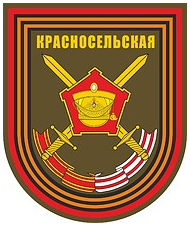
Russia’s Kovrov Electromechanical Plant (KEMZ) is set to begin producing licensed copies of Takisawa’s TMX-4000 five-axis digital milling machine. KEMZ and Japan’s Takisawa have a contract for joint production of six machines before the end of 2021. The first is due in April 2020 and will be exhibited at Metal Working-2020 in Moscow in May.
According to a November 8 press release:
The transition to new generation digital equipment will substantially increase the volume of high technology civilian products. At KEMZ we are beginning to produce five-axis milling centers which have not been manufactured in Russia until now. One of these centers can replace several three-coordinate lathes and reduce the production cycle by several times. Potential buyers — Rostekh’s manufacturing enterprises and companies of the shipbuilding and oil processing sectors — are already interested in the model.
The advanced milling machine is designed to make complex parts for, inter alia, aircraft engines, hydraulic systems, and nuclear reactors with 5-micron accuracy. Only seven companies in the world can make such a machine, according to the press statement.
KEMZ and Takisawa have collaborated since 2013, producing six models of machine tools jointly and more than 30 modifications to systems now produced locally in the Russian Federation.
The TMX-4000 and other, essentially foreign, CNC milling systems will make much more than “high technology civilian products.” KEMZ belongs to Russian government-owned NPO Precision Systems (Высокоточные комплексы) which holds companies producing:
- a wide variety of small arms and ammunition
- grenade launchers
- anti-tank missile systems
- laser-guided munitions
- aircraft- and helicopter-mounted guns and cannons
- naval close-in weapons systems
- Bakhcha and Berezhok turrets for armored vehicles
- Arena and Drozd active armor defense systems
- Pantsir-S1 gun-missile systems
- Strela-10 and Igla-S SAM systems
- Iskander-M SRBMs
One of Precision Systems’ main holdings — KBP — has been under U.S. DOT OFAC sanctions since 2014.
Precision Systems is controlled by government-owned conglomerate Rostekh which is also under U.S. sanctions.
Technology export controls and sanctions aimed at the Kremlin are an old story. They are difficult to manage. They threaten to punish allied countries and companies for doing business with Moscow in order to deter that activity and deprive Russia of commerce. They become as much a bone of contention among allies as a tool against an adversary.
During the Cold War, U.S. leadership was strong and CoCom prevented some strategic exports to the USSR. But that system, such as it was, also failed infamously.
In 1983-1984, Japan’s Toshiba sold the Russians sophisticated milling machines and Norway’s Kongsberg gave the Kremlin the computer and software needed to make more sophisticated propellers that eventually quieted its Improved Akula SSN and fourth-generation nuclear-powered submarines.
In 1987, the CIA assessed the damage like this:

But even with its massive purloining of Western technology in the 1970s and 1980s, the Soviet Union lost the Cold War. It proved incapable of exploiting the equipment and knowledge it stole. They didn’t help Moscow fix the enormous social and economic problems that doomed the CPSU and USSR in 1991.
In today’s Cold War redux, there’s little U.S. leadership, no CoCom, and a plethora of places Russia can get technology it needs and can’t produce. Now it’s buying the right to manufacture the same equipment it obtained surreptitiously nearly 40 years ago. It hasn’t fixed an economic system that struggles even to copy things.
It looked like post-Soviet Russia might join the Western community nations after the end of the First Cold War. It benefited from economic and technological cooperation and collaboration it could never imagine. As the Second Cold War unfolded, Russia largely retained that benefit despite sanctions. That benefit has been put to work in Mr. Putin’s arms buildup, in the development and production of more sophisticated weapons systems. The TMX-4000 and other machinery might be used to make an Iskander-MS (S for improved) that is on the Russian MOD’s agenda, or PAK DA, or Tsirkon hypersonic missiles, etc.
For its part, Japan only symbolically joined in sanctions against Russia following its 2014 invasion of Crimea and eastern Ukraine. Tokyo has kept its relations with Moscow on track in its (probably futile) pursuit of the Northern Territories and a peace treaty to end World War II. The Japanese also balance between Russia and China in the (probably vain) hope that the two great powers won’t get too close at their expense.
But all this is neither here nor there because, under other circumstances, it might have been a different allied country working with KEMZ or some other Russian firm.
Russia will get the technology it wants from other countries somehow, some way. The past shows that. But it’s far from certain, again based on history, that Russia can do what it wants with that technology successfully.






